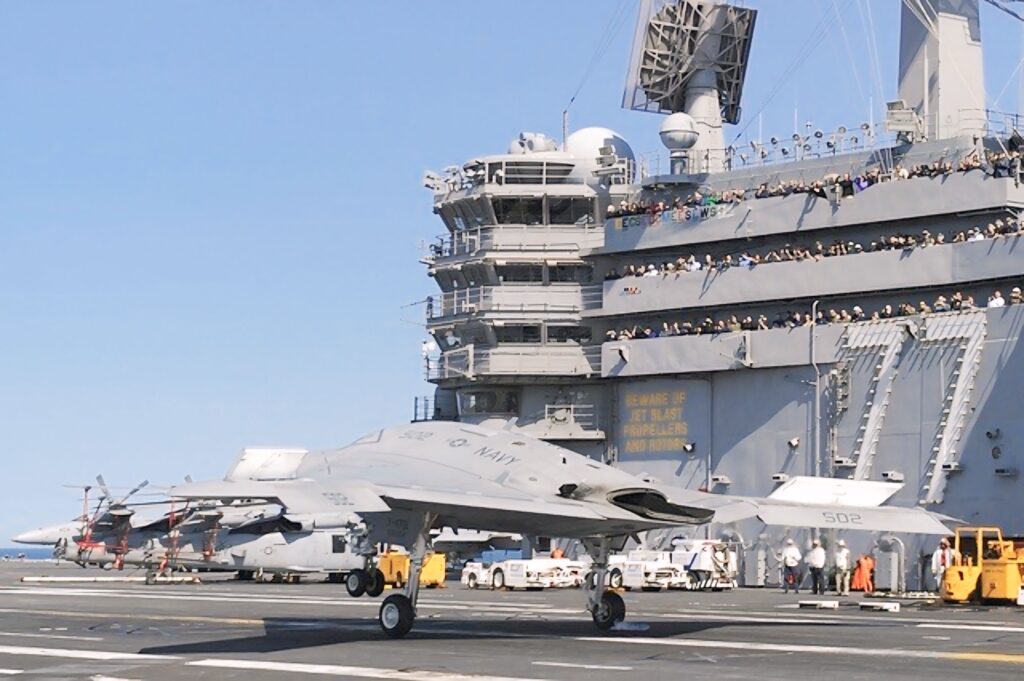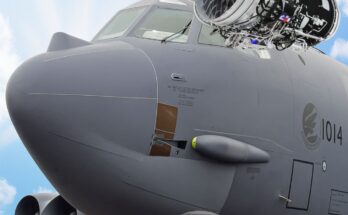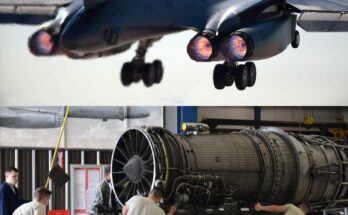
In a major step forward for naval aviation, the Northrop Grumman X-47B unmanned combat air system successfully completed a “touch and go” landing aboard the aircraft carrier USS George H. W. Bush (CVN 77). The event marked another significant milestone in the Navy’s efforts to integrate unmanned aircraft into carrier operations—a complex environment historically reserved for highly trained human pilots.
The test took place under the Navy’s Unmanned Combat Air System Demonstration (UCAS-D) program, which aims to assess how autonomous aircraft can operate safely and effectively from an aircraft carrier deck. The X-47B’s successful maneuver demonstrated that unmanned systems can not only take off and land autonomously but also execute one of the most challenging tasks in carrier aviation—a precise touch and go, where the aircraft briefly lands on the flight deck and immediately takes off again.
A touch and go aboard a carrier requires flawless timing and coordination. The X-47B approached CVN 77’s flight deck under fully autonomous control, guided by the ship’s launch and recovery systems. After making a controlled descent, it touched down momentarily, then powered back into the air without human intervention. Navy officials noted that the aircraft’s flight control algorithms responded smoothly to the carrier’s motion, wind, and sea conditions. This success underscored the potential of advanced software and sensor technology to handle the same demanding conditions faced by human pilots.
Rear Adm. Mat Winter, the Navy’s program executive officer for unmanned aviation and strike weapons, described the test as a crucial demonstration of confidence in autonomous flight operations. “Every time the X-47B operates from a carrier deck, we’re proving that unmanned systems can meet Navy standards for precision, safety, and reliability,” he said. “This touch and go shows that the aircraft can execute complex procedures that are central to carrier operations.”
The X-47B program has already achieved several notable firsts. In earlier tests, the aircraft completed autonomous catapult launches, arrested landings, and aerial refueling demonstrations. Each step brings the Navy closer to its long-term goal of developing operational unmanned combat aircraft that can extend the reach and endurance of carrier air wings. Unlike manned fighters, unmanned systems can stay aloft for longer periods and perform missions that might be too risky for human pilots.
For the crew of the USS George H. W. Bush, witnessing the X-47B’s touch and go was more than a technical demonstration—it was a glimpse into the future of naval aviation. The integration of unmanned systems will eventually transform how carriers project power and conduct missions. By operating alongside manned aircraft, drones like the X-47B could handle surveillance, electronic warfare, or strike missions with greater efficiency and reduced risk.
As the UCAS-D program transitions into future initiatives such as the MQ-25 Stingray refueling drone, the lessons learned from the X-47B’s test flights will shape the Navy’s next generation of carrier-based operations. The successful touch and go aboard CVN 77 stands as clear evidence that the era of unmanned carrier aviation is not just on the horizon—it has already begun.


